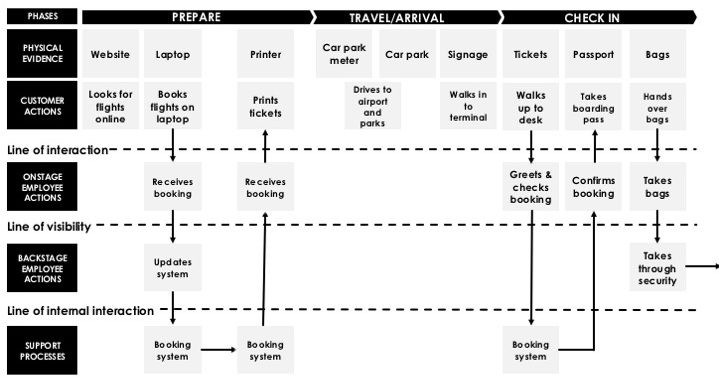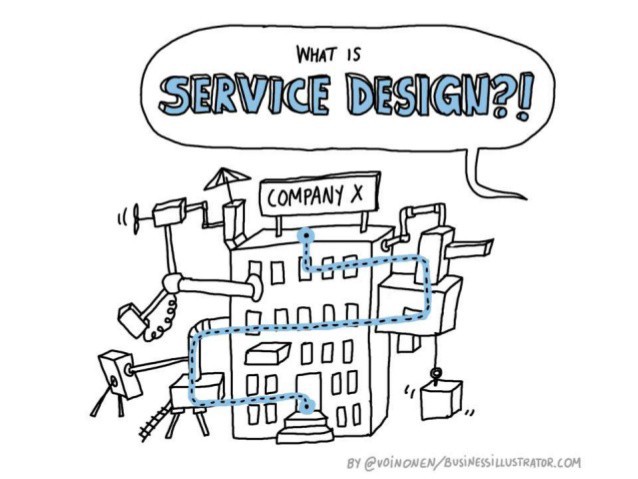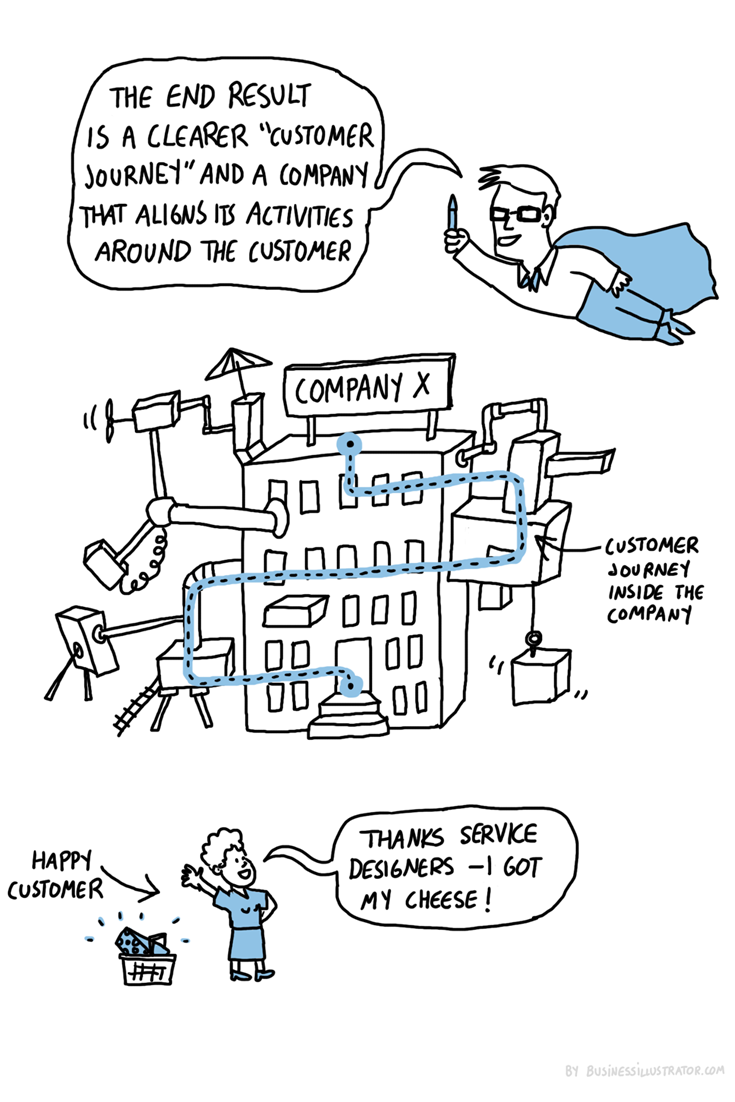
Bunnyfoot’s Service Design Blueprint example
In my first story ‘User Experience is …’ I promised that …
"over the course of a few stories, I’ll try and cover a few of the sciences we draw upon in our art as a creative community to create engaging experiences."
Most recently I looked at how design thinking is behind everything that goes into designing a great experience. But building a great experience is more than just the experience within an app. It’s the experience you receive that crosses multiple channels and traverses the digital and physical worlds. Before, during and after conversion, it’s the service you receive. Yes User Experience is … Service Design.

Bunnyfoot’s Service Design Blueprint example
The idea behind Service Design is not to just make individual experiences better but to make the whole service easier, quicker and more delightful to engage with. Providing a lasting delightful interaction and not just a moment of delight. Does this sound familiar? Has this been the aim in one of your latest digital products? OK, so you see it’s not too different from user experience.
Often the work done, tools, techniques, methodologies and principals used are all similar. But what truly sets them apart is scope and mindset. Service Design looks at the much broader scope of before, during and after conversion; traditional pre-sales, during sale and post sale.
While it would also look at how and when the service switches channel (advertising, web, tablet, mobile, store) and of course when it traverses the digital and physical worlds. It focuses on how the experience is handed off between all these touch points in order to provide a continuous experience, or even an ever improving experience and continuity for both the customer and colleague.
Service Design uses a more agnostic approach to explore opportunities and challenges through the whole service offering.
Where as traditionally User Experience has centred around only a single digital touch point. As User Experience itself and also design teams have matured they’ve naturally started to expand their scope and now Service Design also plays an important part in User Experience.

What is Service Design, Business Illustrator
Although there is definitely a difference in scope. Both Service Design and User Experience both aim to create and deliver something people can, and want to, use.
So many of the tools, techniques, principals, methods and concepts are used within both User Experience and Service Design. Both go through these similar steps:
And to progress through these steps, both would use similar techniques, in order to learn, validate and provide certainty:
The rationale around the use of these techniques is to define any opportunities or challenges and understand the users motivation. Once we have this awareness then work can be done to design out challenges or make the most of the opportunities. Ultimately prototyping and testing any designs, hypothesis or assumptions along the way to see how much improvements they drive.
Both User Experience and Service Design face this similar challenge. Only when a problem has been accurately defined and understood by the team, will a suitable solution be designed.
“If I had an hour to solve a problem and my life depended on the solution, I would spend the first 55 minutes determining the proper question to ask, for once I know the proper question, I could solve the problem in less than five minutes.”
Albert Einstein
There is so much overlap and similarities between User Experience and Service Design that the skills and knowledge needed mean that these two fields could naturally come together.
You could argue that these two fields should already be together and that User Experience is just a part of Service Design. However this isn’t currently happening widely across the industry. There is still a slight disconnect between the two. Mainly due to scope and focus of organisations to return ‘immediate’ ROI and fix ‘immediate’ problems. But also in part due to the agile principals that focus the team on the immediate value and next few weeks of work, which is quite rightly applied to engineering solutions.
“And understandably, but that doesn’t mean that designers have to force themselves to work in that way too, especially when it doesn’t fit or feel right.”
The other thing to consider when looking at the similarities of these two fields, is also the differences. Service Design is such a multidisciplinary field, the covers more than just digital commerce, so there are naturally areas that can’t be covered by the traditional User Experience field. Nor should it, each field has its focus, specialism and value. Naturally you can argue the opposite. A digital product and solution shouldn’t solely be designed by the Service Design field as they’re are specialisms in User Experience that would lead to a better experience. However that is not saying that the specialisms can’t be learned and be pollinated across the fields, leading to more T-Shaped designers.

Service Design journey, Business Illustrator
Rather than separating both fields, thinking back to agile principals we should be bringing the right team together, for the solution we are working on, which could include a User Experience and Service Designer, or a more T-Shaped designer, with the support of specialists. This will allow the team to complement and learn from each other.
Overall it’s not just a case of better recognising each other’s work, but also working together, pooling our knowledge and experiences. This will lead to greater understanding and consistency in terminology for the various tools and methodologies.
Ultimately this will help us create better ideas and give people the best ‘service’ they are looking for.
After looking at a number of other roles and fields that’s involved within User Experience, I’m going to take a look at how User Experience involves some agile coaching.
Originally written as part of the ‘User Experience is …’ series for UX Collective.